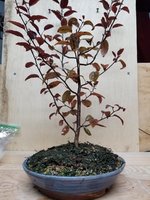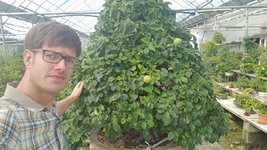HorseloverFat
Squarepants with Conkers
I went a little nuts this year(Autumn) “tree hunting”... the GOOD news is that NOW all the DNR Marshalls and public (state/federal) property managers (around here) Are positively aware of me, and my “goings on” and we have developed a reasonably friendly relationship.Most of my trees are natives, dug up in the yard or from collected seed... so I'm limiting myself to only what Ive just recently procured or can procure. I would love to include my Alder or silver maple, but theyve been with me for several years and I like the idea of the contest being a way to push myself to improve material which, in my opinion, may have more potential.
I also internally considered similar situations as you’ve described, regarding utilization of already possessed native material.. even spring collections. I ended up “landing on” (personally, mentally) the decision that material obtained or propagated with intent to use in the contest, needed to have said intent prior to collection or growing.
T’will be a grand contest.


